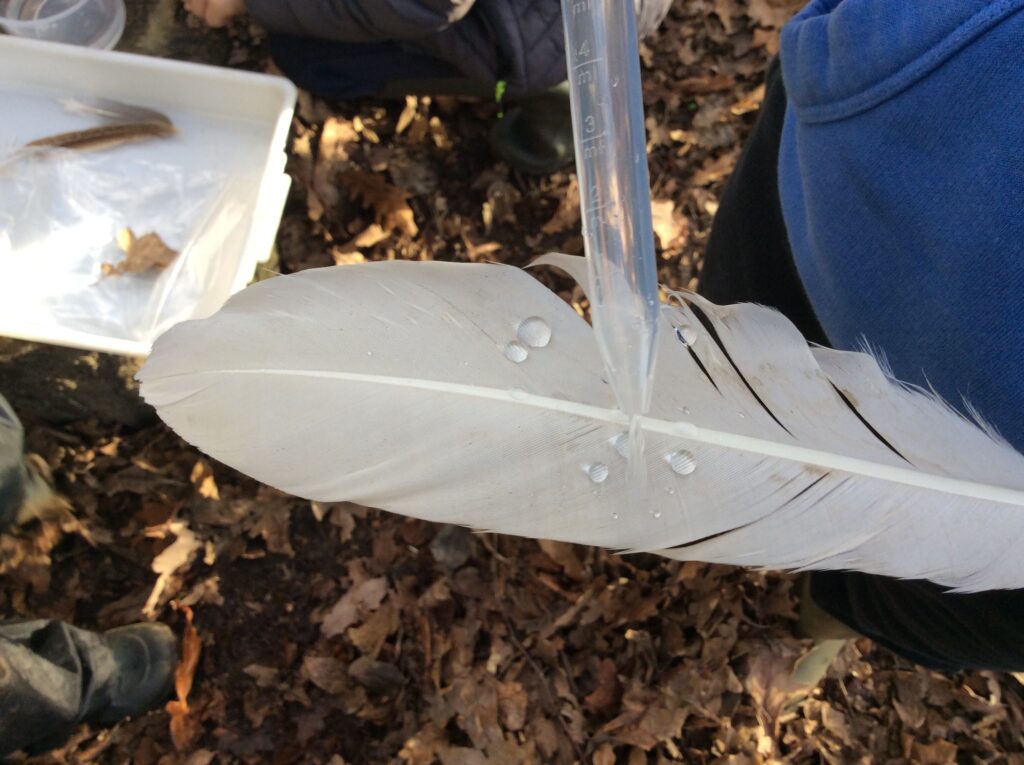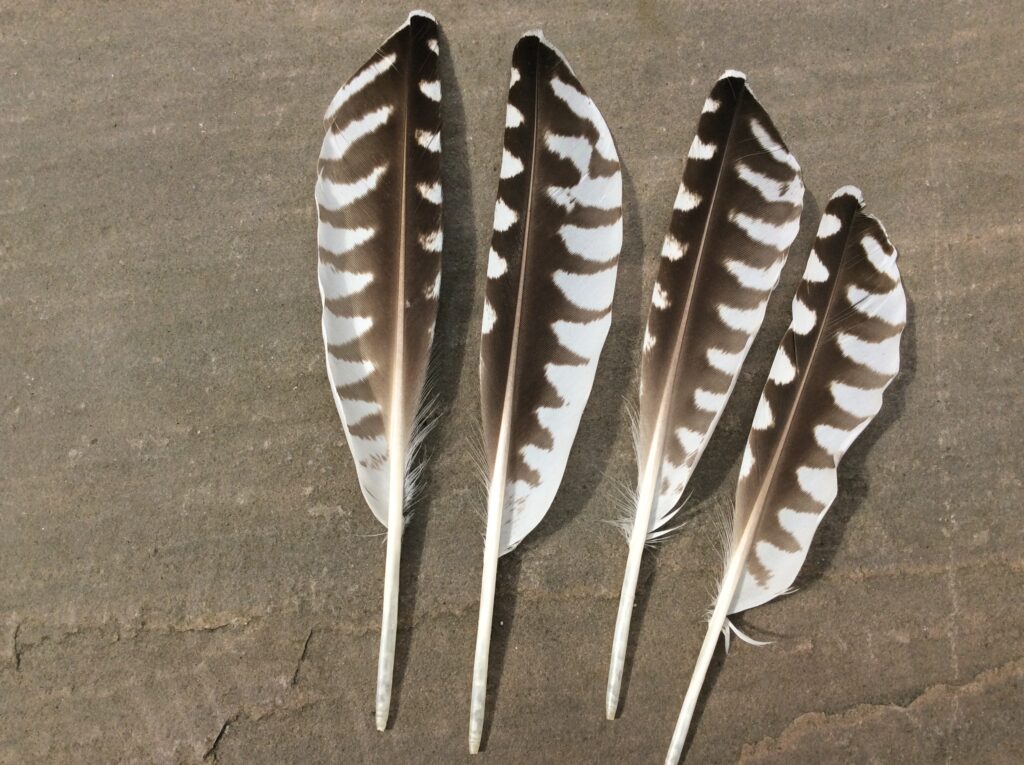
Feathers are unique to birds. Strong, yet light and flexible, a single feather is an object of great beauty. Late summer, through August and September is a good time to look for feathers when adult birds are moulting: a process of shedding old feathers and growing new ones. Not surprisingly many birds are looking a bit shabby after the efforts raising their young, and are now growing new, strong, warm and weatherproof feathers for the winter. Take a close up look at a feather and try out these activity ideas.
Feathers are made from a strong protein called keratin, the same substance as our fingernails and hair, which is very light and amazingly strong. Most feathers have a hollow central shaft with vanes on either side. These vanes are made up of separate branches known as barbs from which smaller barbules branch off and interlock with tiny hooks and ridges – just like Velcro.
Focus on feathers: Pick up a feather and run it through your fingers. How does it feel? – delicate, light, flexible. Use a hand lens to look at the tiny barbules. Then gently ‘unzip’ a feather and then ‘zip’ it up again by pinching and drawing your fingers along the separated barbs from the shaft to the outer edge. Try and collect a variety of feathers and look carefully at their size, shape and patterns.
Can you identify the following feathers?
Flight feather – these are the longest and strongest feathers in the wings; called the primaries and secondaries, and the tail. They are asymmetrical with one vane that is thin and stiff whilst the other is wider and flexible.
Contour feather – smaller feathers that cover the bird’s body, head and wings. Many are brightly coloured towards the tip which creates the bird’s distinctive plumage; its pattern and colour.
Downy feather – small and fluffy with a very short shaft with non-interlocking barbs. These feathers are the closest to body and hold the air that insulates and keeps the bird warm.
Now hold a feather towards the light. Many colours in a bird’s plumage are due to iridescence – we see different colours depending on the angle the light is reflected from the feathers. It’s this variety of colour that can make birds so beautiful to watch.
Changing feathers – feathers are strong but need to be replaced annually, with a main moult usually after the breeding season, to replace those that are worn thin and damaged by parasites. They don’t lose them all at once, it’s a gradual process over a number of weeks – otherwise they’d be unable to fly or keep warm! Growing feathers takes lots of energy and birds often become quiet and inconspicuous. Have you noticed that there is less birdsong in the summer?
Top Fact: Small songbirds have between 3,500-5,000 feathers; whereas water birds may have as many as 12,000 feathers to stay warm in cold waters.
Feather care: Birds spend a lot of time looking after their feathers. Preening is when a bird runs individual feathers through its beak to repair and rearrange its feathers back into shape. Put out a bird bath, a large glazed or plastic plant saucer works well, to watch birds bathe in the water and then preen to keep their feathers in tip top condition. Many feathers are also waterproof. Simply drop a little water onto a large flight feather using a small pipette to watch how the feather sheds water.
Whose feather? With a little detective work create your own feather guide or journal to help with identification. A small slot can be cut into each page for the feather shaft to sit in.

I’ve been enjoying walks along the coast, particularly areas where mudflats are exposed at low tide. The constantly changing seascape with birds arriving to feed in the food-rich mud provides a good opportunity to look for moulted seabird feathers, in particular the larger flight feathers from the wing and tail. Try and match the distinctive patterns of the feather to the plumage – overall colour and pattern – of the birds seen feeding. The above feathers are from a curlew. My favourite reference book for feather identification is ‘Tracks and Signs of the Birds of Britain and Europe’ by Helm Identification Guides.
So with some detective work bird feathers are fascinating to discover and learn about. I’m now curious to investigate bird tracks left in the mud. Maybe my next post idea!
For more feathery inspiration and beautiful illustrations check out ‘Birds and their Feathers’ by Britta Teckentrup.
